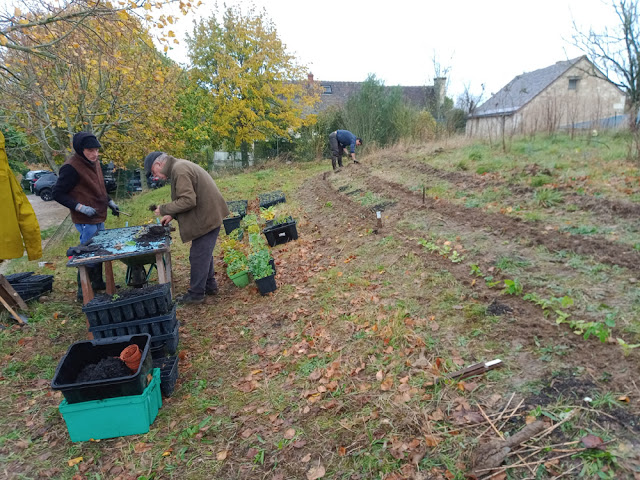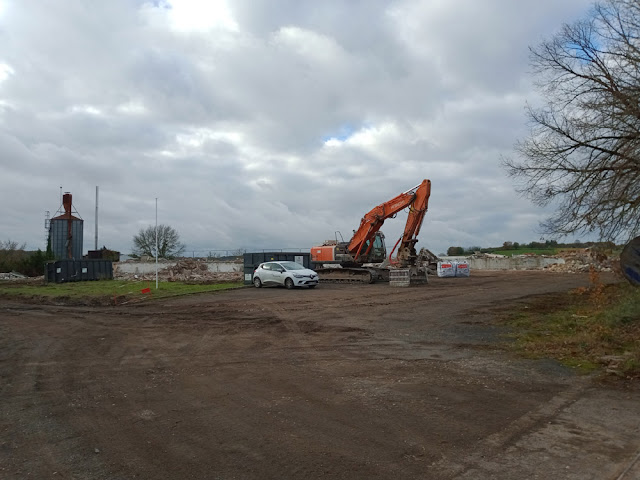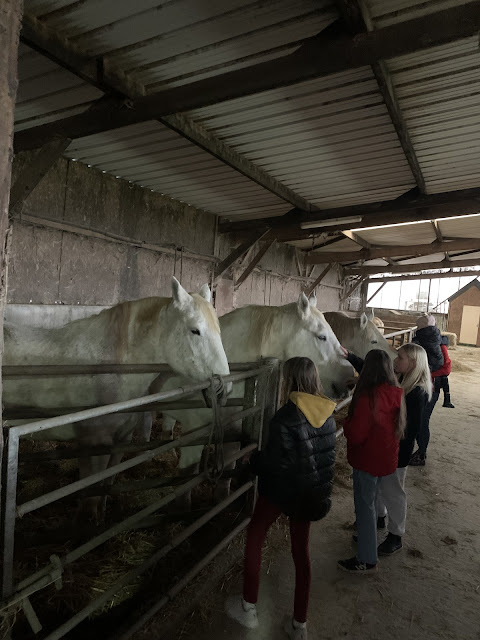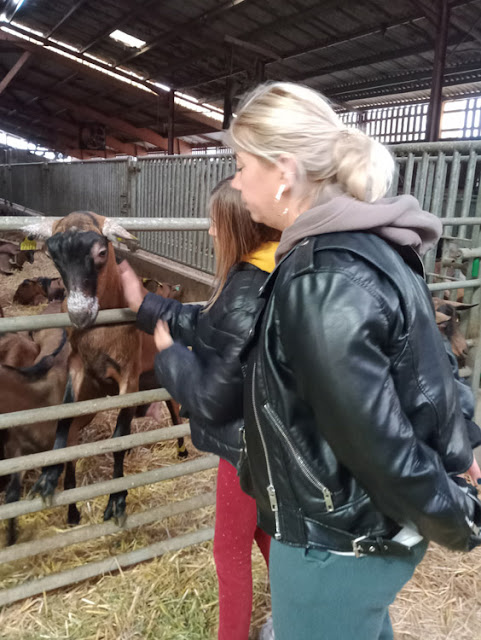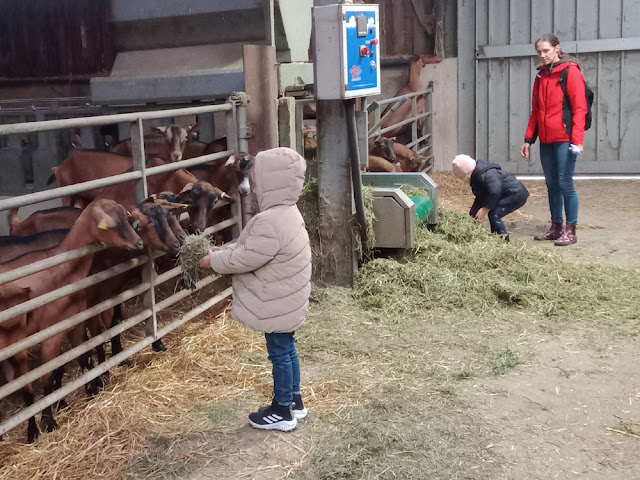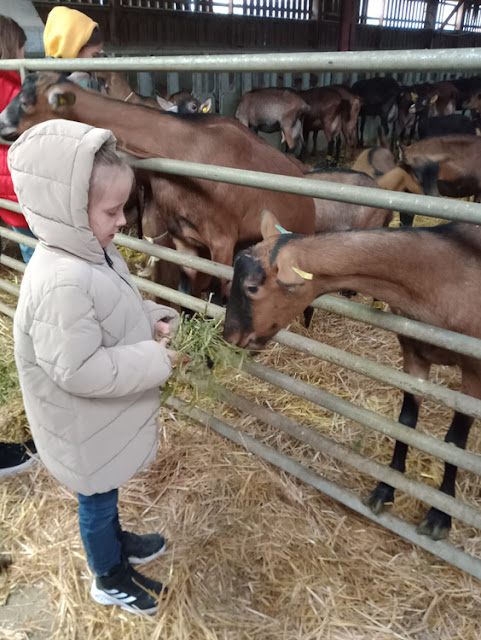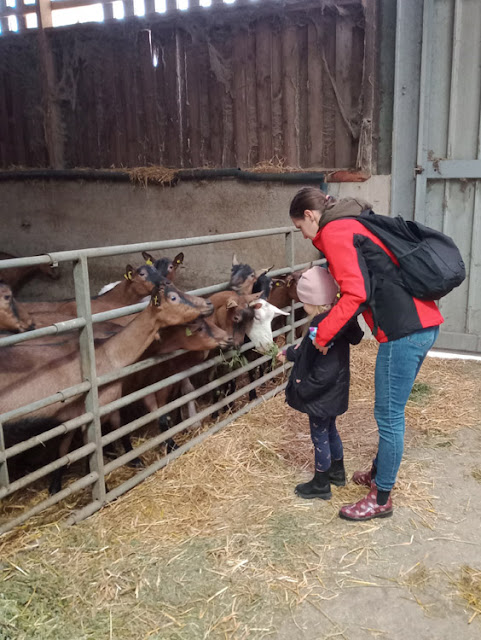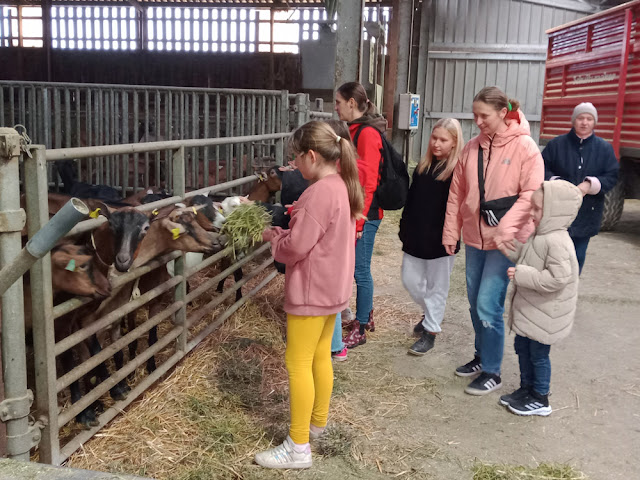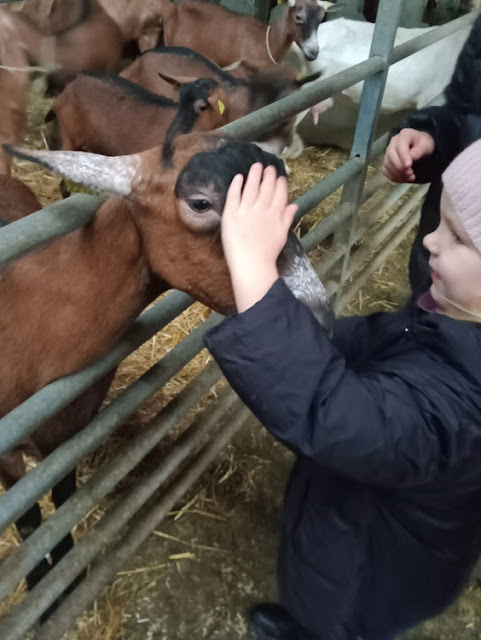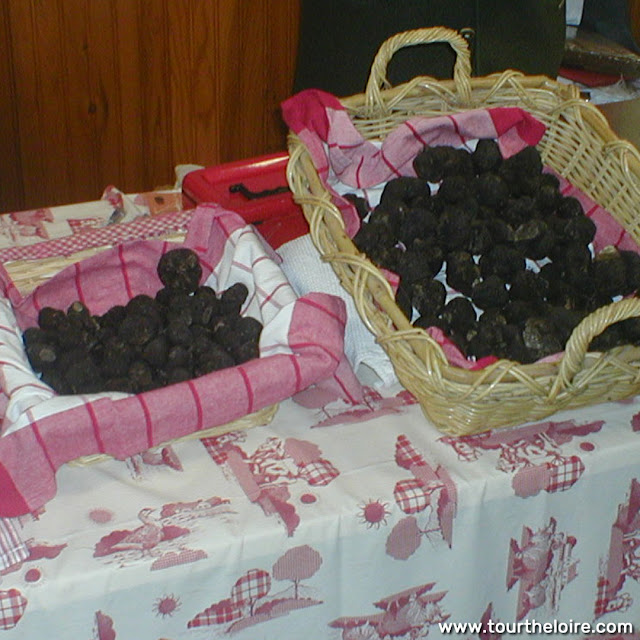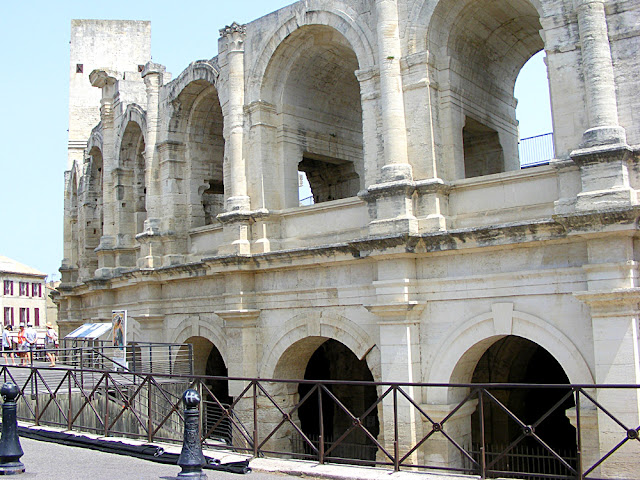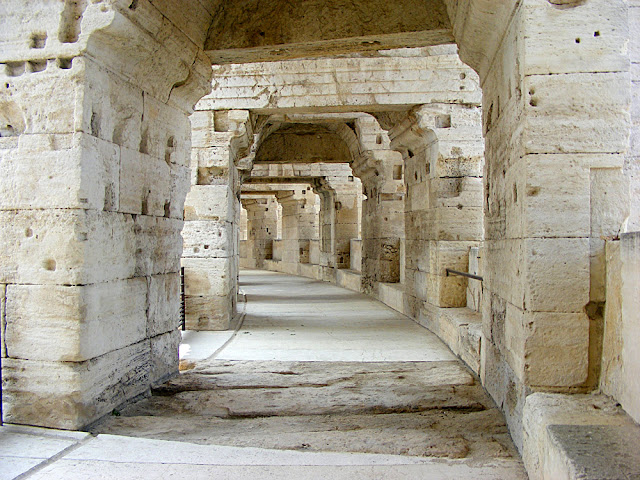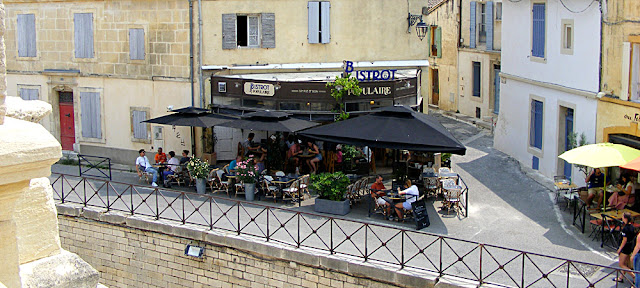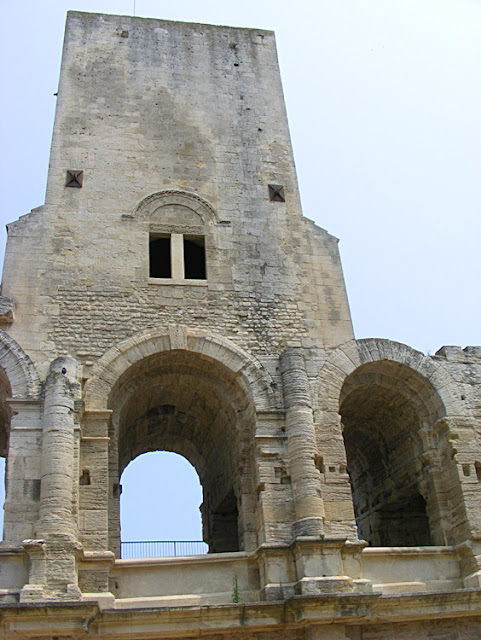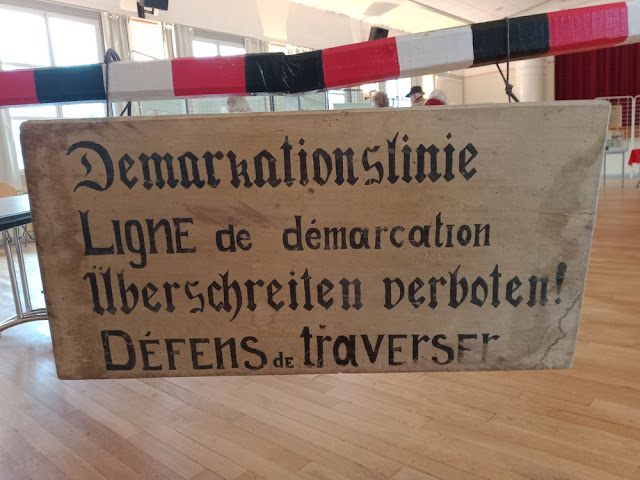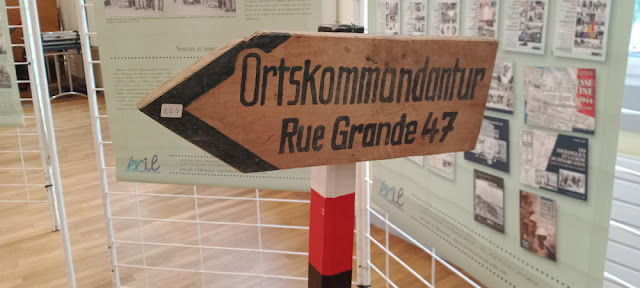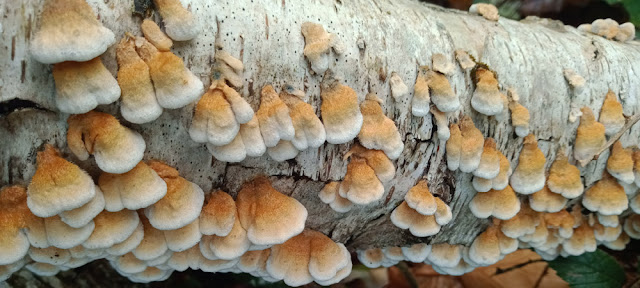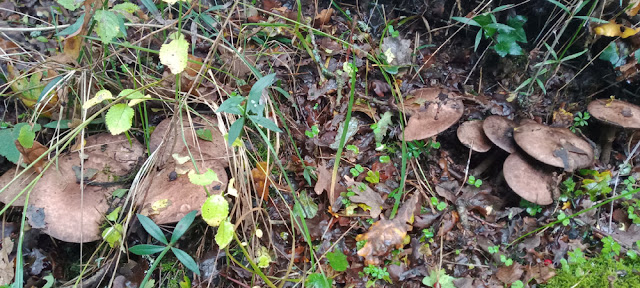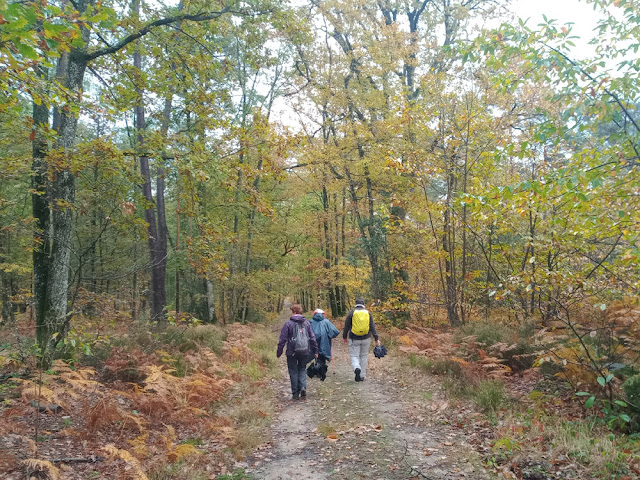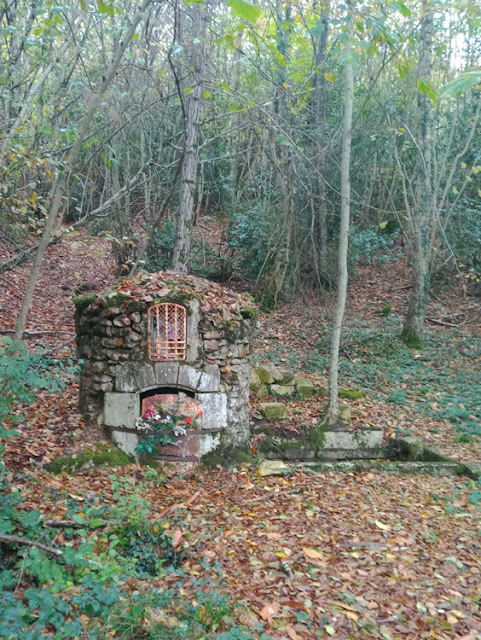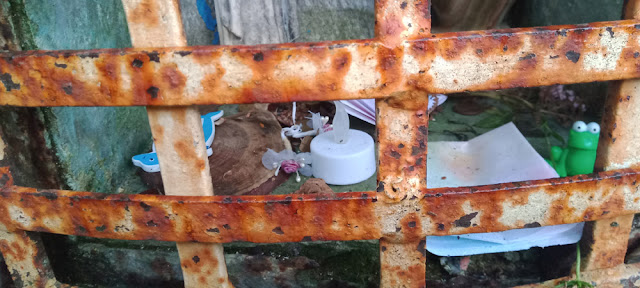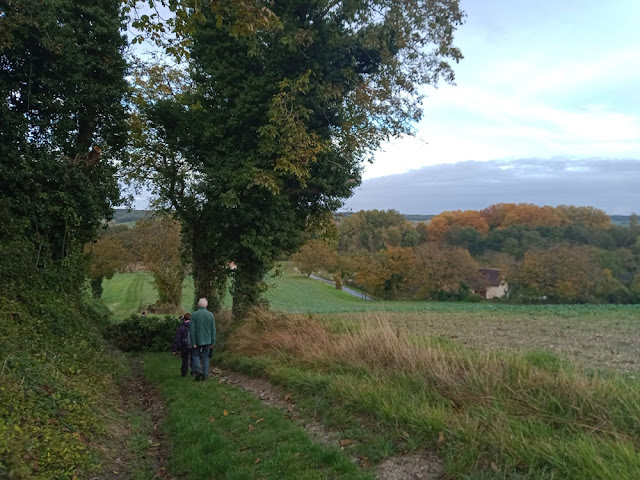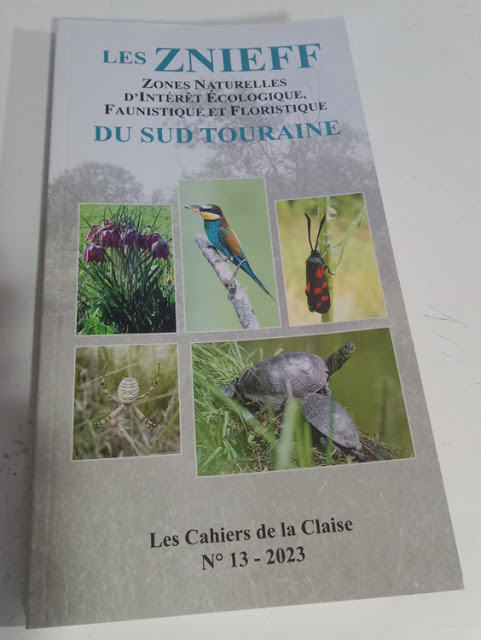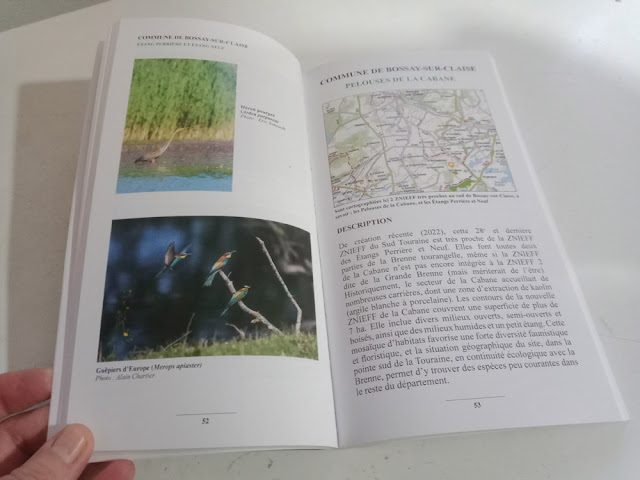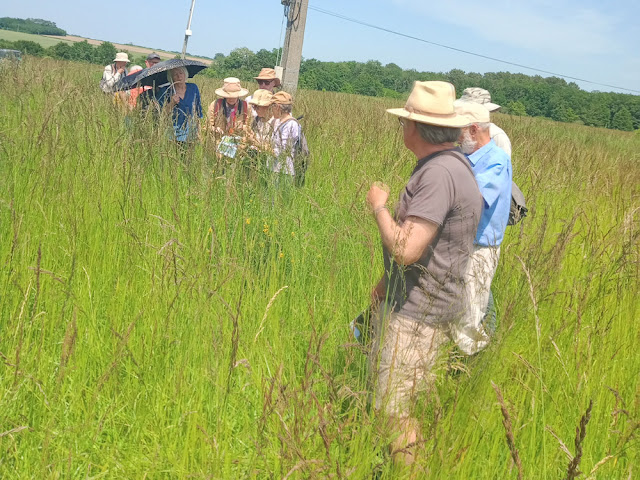I went up to Sainte Maure de Touraine (Village de Vaux to be precise) on a wet day in mid-November to help plant out little tree seedlings. Antoine had collected seeds from local species and sowed them in seedling pots last year. Now they were ready to go into temporary positions in the ground. Christian had laid out three shallow furrows on an east facing grass slope on his property. The seedlings were laid out in crates by species -- Sessile Oak Quercus petraea (Fr. rouvre), Wild Service Tree Sorbus torminalis (Fr. Alisier torminal), Dogwood Cornus sanguinea (Fr. Cornouiller sanguin), Domestic Service Tree Sorbus domestica (Fr. Cormier), Wild Privet Ligustrum vulgare (Fr. Troène commun), Sweet Chestnut Castanea sativa (Fr. ) and European Crab Apple Malus sylvestris (Fr. Pommier sauvage). Guillaume and I extracted them from their pots, Antoine and Christian planted them.
In a year's time they will be available for landowners who want to give them a good home and plant a hedge, or even just dot a few native local trees about. They will already be well adapted to the local conditions and should thrive.
Once we were done we sat around drinking organic wine supplied by Guillaume. He's currently working with wine makers as a consultant. He also presented me with a bottle of apricot nectar, made by one of his clients. He was rather amused to learn about the Aussie classic Apricot Chicken, and that will certainly be what I use the nectar for. Especially as I've just defrosted and cleaned the freezer and discovered I have eight packs of two chicken legs. Powdered French Onion Soup by Maggi turns out to be unavailable, but fortunately Knorr make it and my local supermarket stocks that.

